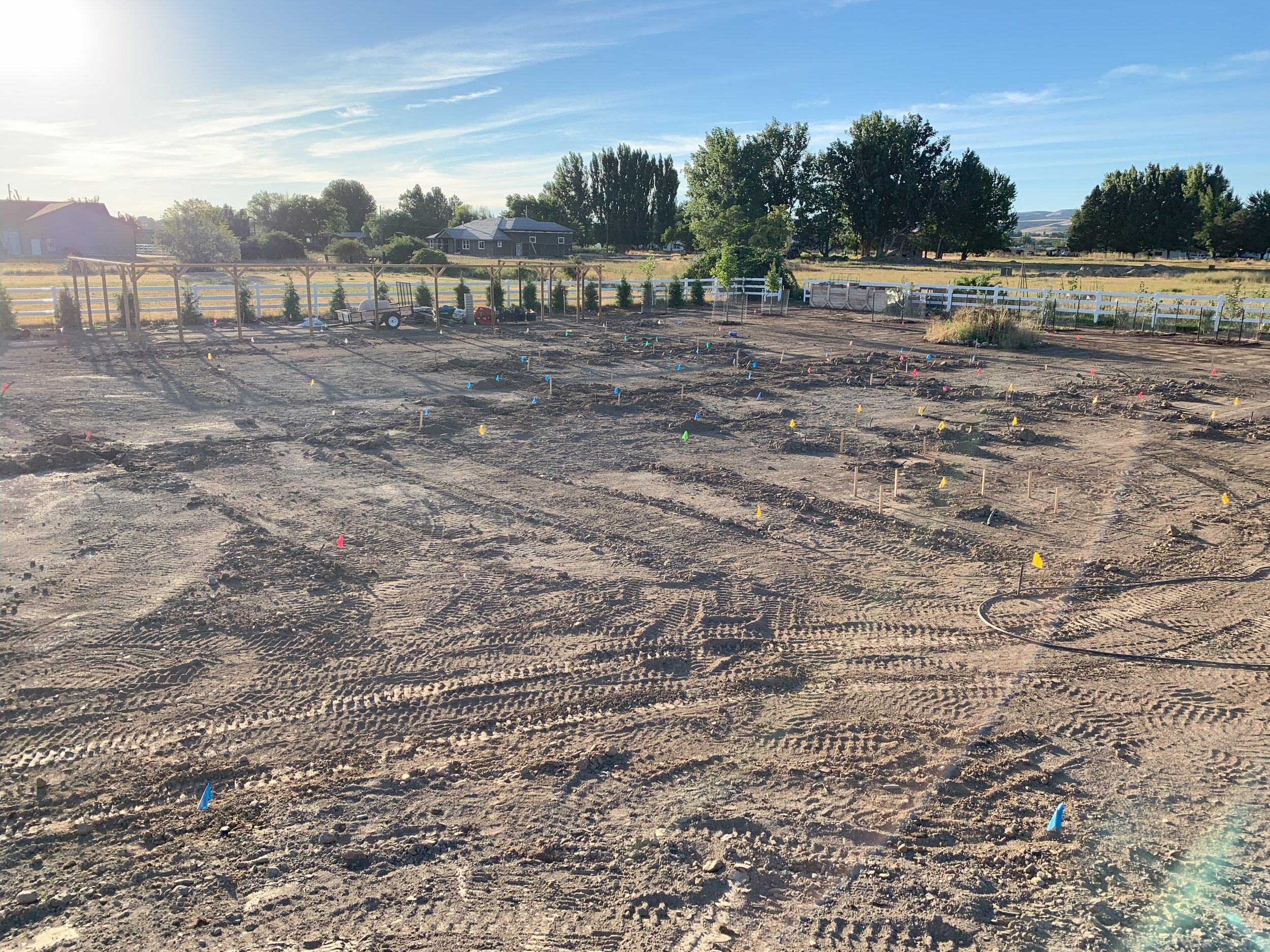Creating a Garden - Shortmeadow: Clearing the Site and Building a Hill
From Cattle Pasture to Garden and Yard
Our property, and the surrounding area in general, had been used for cattle pasture for decades prior to our arrival. Two of the landowner’s designated inheritors decided to split a five acre parcel into four lots with a common lane. Our lot was essentially compacted soil and weedy pasture with a few brambles along an abandoned ditch bank and one wild rose. It was still very beautiful when the tall pasture grass was at its best.
However, that tall pasture grass was beyond redemption and the entire site needed to be scraped with some gentle grading thrown in. I scraped the pasture with a rented skid-steer and used the material to start building a hill and a few berms along the western and southern boundaries. Then, I hired a landscaping crew to complete the shaping of the berms and building of the hill by importing truckloads of topsoil.
Building a Hill and Berms
I got the idea for using the pasture scrapings and building a hill for a) privacy and b) a winter sledding hill when pushing a long cut of scrubby turf into one of the piles where the hill stands today. It provides privacy for our covered patio seating area and is perfect for winter sledding.
One of the benefits of scraping off the old, weedy pasture grass was getting a good view of the soil across the site. On the east side there is a long, narrow section that is sand, gravel, cobblestones with a bit of loamy topsoil. It’s very fast draining. On the west side, most of the soil is heavy clay. Knowing these differences has helped to understand what each tree, shrub, etc. may need in that various locations and what amendments to the soil are needed in each location. Not surprisingly, good garden compost, grass clippings, leaves, and/or aged manure can benefit either type of soil but in different ways. It can provide the sandy soil with more body, nutrients and moisture retention. It can open out the heavier clay soils.


